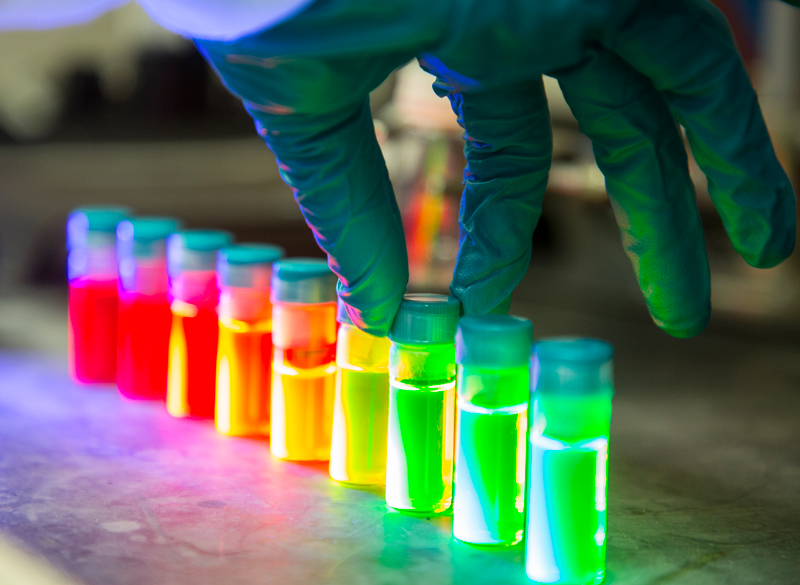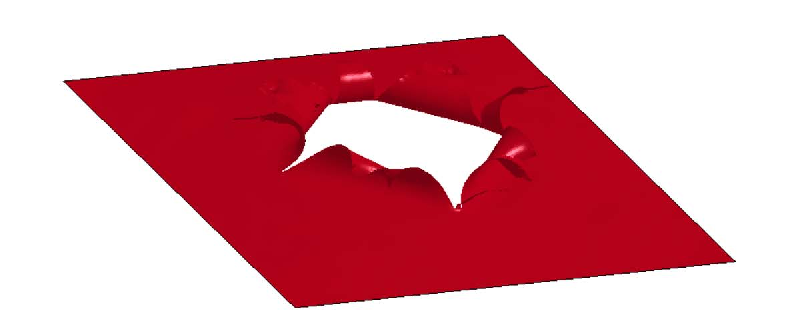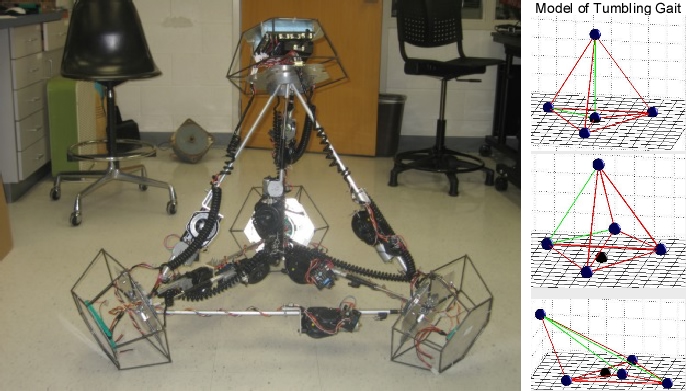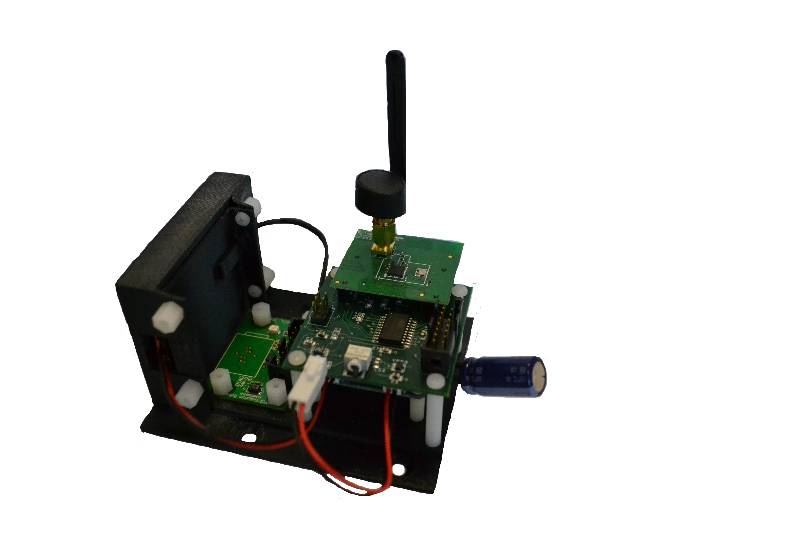Research
Hope students have the opportunity to work closely with faculty members, striving to answer novel research questions in a variety of engineering fields.
Materials for Energy
 Semiconductor materials underpin the technologies all around us and play a key part
in many sustainable energy-related technologies. The Christians research lab uses
interdisciplinary methods to understand and improve semiconductor materials for energy
applications, especially as photovoltaic (solar cell) absorbers. You can learn more
about the research and how you can join the group at christianslab.com.
Semiconductor materials underpin the technologies all around us and play a key part
in many sustainable energy-related technologies. The Christians research lab uses
interdisciplinary methods to understand and improve semiconductor materials for energy
applications, especially as photovoltaic (solar cell) absorbers. You can learn more
about the research and how you can join the group at christianslab.com.
Biomechanics of Manual Patient-Handling Tasks
 Manual patient-handling tasks have been associated with low back and shoulder/neck
injuries in caregivers. Dr. Odle and her students seek to understand how caregivers and patients interact during these
tasks and how the forces generated during their interactions affect the low back and
shoulders. This interdisciplinary project combines experimental and computational
biomechanical modeling techniques.
Manual patient-handling tasks have been associated with low back and shoulder/neck
injuries in caregivers. Dr. Odle and her students seek to understand how caregivers and patients interact during these
tasks and how the forces generated during their interactions affect the low back and
shoulders. This interdisciplinary project combines experimental and computational
biomechanical modeling techniques.
Impact-Loaded Structures
 Dr. Veldman’s research seeks to understand how thin-walled metallic structures respond to high
impact loading. Finite element analyses are first used to predict the response of
a clamped structure to a projectile impact. Then these results are validated through
direct comparison with laboratory experiments.
Dr. Veldman’s research seeks to understand how thin-walled metallic structures respond to high
impact loading. Finite element analyses are first used to predict the response of
a clamped structure to a projectile impact. Then these results are validated through
direct comparison with laboratory experiments.
Nerve Stimulation for Phantom Limb Pain
 Dr. Polasek and her students are working toward designing a non-invasive, home-based therapy
for treating phantom limb pain using electrical stimulation. In particular, better
methods to activate nerves from the surface of the skin are being developed. Computer
models are used to make initial predictions of effective electrode locations that
are then tested on people with and without amputated limbs.
Dr. Polasek and her students are working toward designing a non-invasive, home-based therapy
for treating phantom limb pain using electrical stimulation. In particular, better
methods to activate nerves from the surface of the skin are being developed. Computer
models are used to make initial predictions of effective electrode locations that
are then tested on people with and without amputated limbs.
Responsive Material Systems
 Photomechanical materials are specialized materials that convert light energy to mechanical
work. Dr. Smith’s research group works on developing photomechanical materials that can be easily shaped
or printed into engineered device components. This interdisciplinary project combines
optical and mechanical testing, computer simulation and chemical synthesis.
Photomechanical materials are specialized materials that convert light energy to mechanical
work. Dr. Smith’s research group works on developing photomechanical materials that can be easily shaped
or printed into engineered device components. This interdisciplinary project combines
optical and mechanical testing, computer simulation and chemical synthesis.
Tetrahedral Walker Robotics Technology

Dr. Abrahantes and his students focus on developing a robotic system that can easily travel over
rough terrain. The robot design is based on shape-changing geometry with trusses
that lengthen and shorten, thus allowing it to move through a tumbling motion. To
enable fluid movement, this project focuses on intensive computational modeling and
development of control strategies for the robot and pairs this with experimental validation.
Structural Monitoring of Civil Infrastructure
 Civil infrastructure is highly exposed to the environment and also can be subject
to degradation due to normal everyday use. Dr. Peckens’ research team seeks to understand how these loads impact such structures over extended
periods of time. Wireless sensor nodes are developed in the laboratory and used to
monitor structures for fatigue and degradation. Data collected from the monitoring
is analyzed for trends and insight into the system behavior.
Civil infrastructure is highly exposed to the environment and also can be subject
to degradation due to normal everyday use. Dr. Peckens’ research team seeks to understand how these loads impact such structures over extended
periods of time. Wireless sensor nodes are developed in the laboratory and used to
monitor structures for fatigue and degradation. Data collected from the monitoring
is analyzed for trends and insight into the system behavior.
Physical Property Modeling from Equations of State
In chemical process design, engineers need general methods for predicting physical properties of various substances as both liquids and vapors. Chemical engineers commonly use cubic equations of state such as Soave-Redlich-Kwong and Peng-Robinson. Dr. Misovich's research team uses common equations of state to predict vapor-liquid phase equilibrium or Pressure-Volume-Temperature behavior and apply mathematical methods to generate data for physical properties from these equations.
Advancing Eco-Friendly Construction with SCMs
 Dr. Kang’s research explores eco-friendly construction materials, with a focus on repurposing
supplementary cementitious materials (SCMs) as sustainable alternatives in concrete.
By engaging students in hands-on testing and analysis, his lab aims to contribute
to reducing the carbon footprint of construction while preparing future engineers
to build resilient, low-carbon infrastructure.
Dr. Kang’s research explores eco-friendly construction materials, with a focus on repurposing
supplementary cementitious materials (SCMs) as sustainable alternatives in concrete.
By engaging students in hands-on testing and analysis, his lab aims to contribute
to reducing the carbon footprint of construction while preparing future engineers
to build resilient, low-carbon infrastructure.
VanderWerf Hall27 Graves PlaceRoom 204Holland, MI 49423
workP. 616.395.7510
engineering@hope.edu